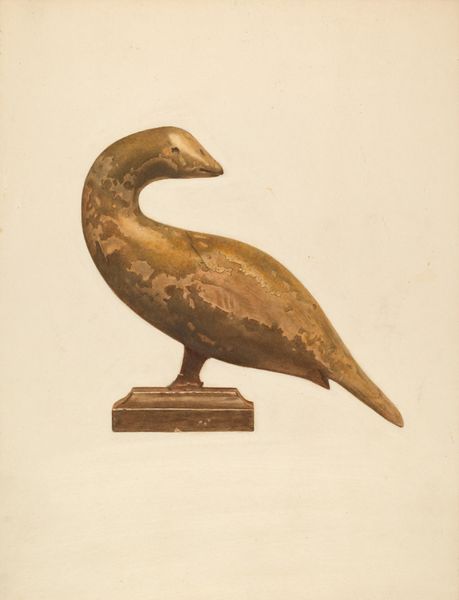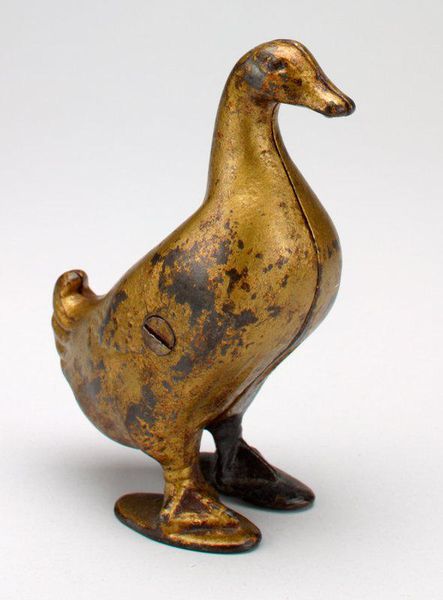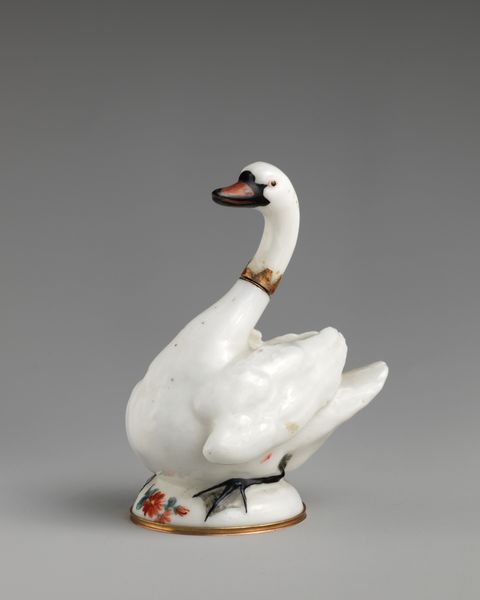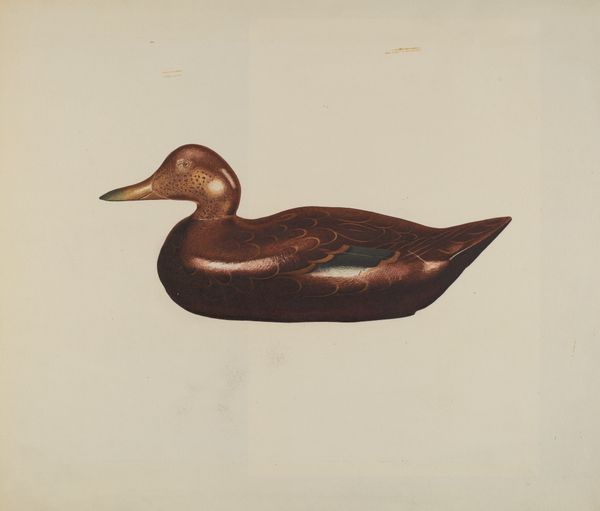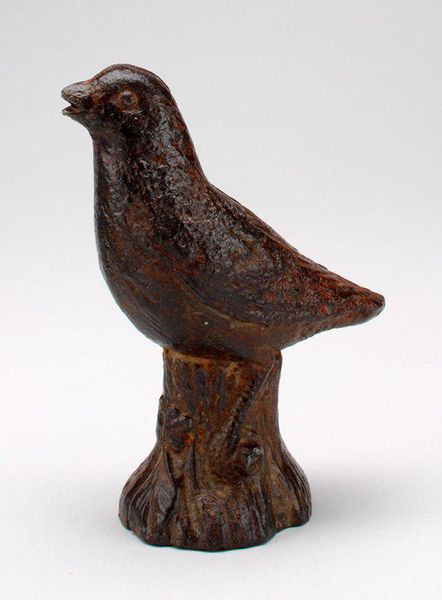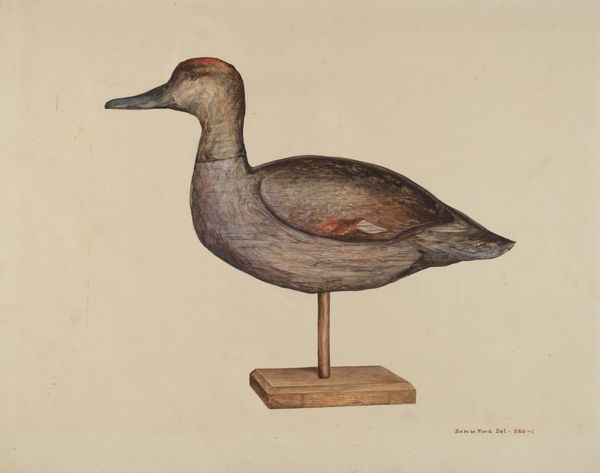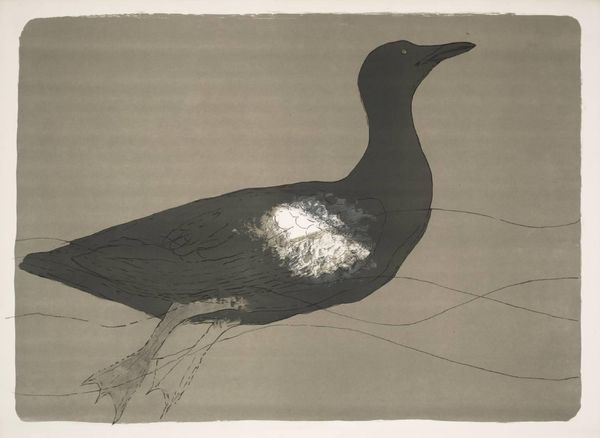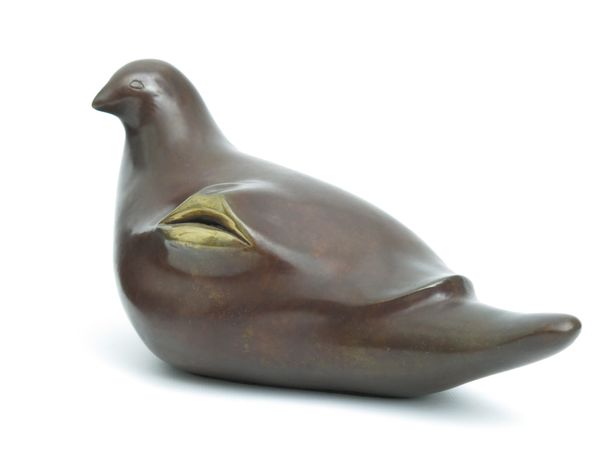
bronze
#
fluid shape
#
3d sculpting
#
sculpture
#
ring
#
bronze
#
sculptural image
#
unrealistic statue
#
3d shape
#
sculpting
#
charcoal
#
statue
Dimensions: 14 cm (height) x 14.5 cm (width) x 7.5 cm (depth) (Netto)
Curator: Standing before us is "And," a bronze sculpture dating back to 1900, crafted by François Pompon. It's currently housed at the SMK, the Statens Museum for Kunst. Editor: I must say, my initial impression is one of profound serenity. The smooth, almost seamless surfaces and rounded form exude tranquility. It's a duck distilled to its most essential essence. Curator: That's a beautiful observation. Pompon was indeed known for simplifying animal forms to capture their inherent character. "And" embodies this principle perfectly. He reduces the duck to almost geometric perfection. Editor: The brilliance is the elimination of distracting details. This isn't a photographic likeness. Pompon invites us to contemplate the pure idea of “duckness”. Is that a word? I’m making it one. Curator: Indeed. His choice of bronze contributes to the timeless quality of the sculpture. Bronze as a material lends itself to permanence, contrasting perhaps the fleeting presence of a duck in nature. The medium elevates what may have been once common into the status of art, a symbol, you know? Editor: I’m noticing now how light plays on the bronze. It’s more like gently embracing than sharply reflecting. The light amplifies the form. And it calls attention to all of the small tonal transitions in ways that really brings out all its curves. It seems a little magical somehow. Curator: Pompon, although working in the late 19th and early 20th centuries, anticipated many modernist ideals. It speaks to the way museums construct notions of ‘modern’ versus ‘traditional’– a sculpture like this destabilizes those neat boxes. Editor: That tension is compelling, because even in its smoothed and rounded shape it carries, maybe unintentionally, a memory of the natural form. And the title, “And,” it begs the question: And what else? What else is there to the experience of beholding this form? Curator: "And" reminds us to look deeper, and perhaps challenge the rigid classifications imposed upon art. It occupies an interesting place in art history. Editor: Ultimately, it's the sculpture's quiet strength that resonates most. In a world of noise and fury, there's an enduring appeal to such elegance and simplicity. I really think so, anyway.
Comments
No comments
Be the first to comment and join the conversation on the ultimate creative platform.



